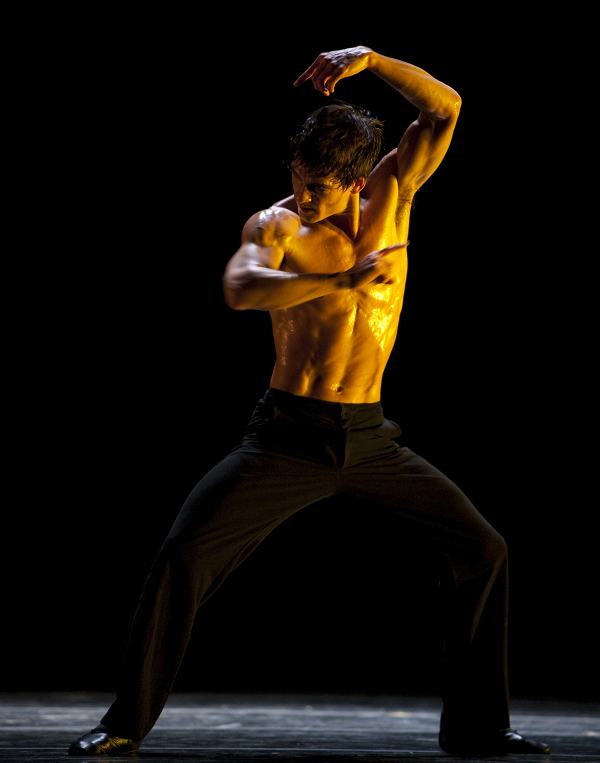The Dance Must Go On: Pacific Northwest Ballet Returns with Online Performances
Review of Pacific Northwest Ballet's Rep 1
Written by Teen Writer Carolyn Davis and edited by Teen Editor Lily Williamson

Ballet is a raw expression of emotions. Pacific Northwest Ballet’s Rep 1 includes excerpts from Jewels, inspired by iconic choreographer George Balanchine’s trip to Van Cleef and Arpels, the elegant and romanticized story of Swan Lake, a story of forbidden love between a man and a black swan, and Mopey, a ballet I had never seen before that transcended the constraints of typical ballet, offering a contrast in performances. Anyone can appreciate Rep 1, which offers a complex mix of divergent emotions that keeps you on the edge of your seat and is enjoyable both for ballet newcomers and veterans.
What intrigues me about ballet is its artful conveyance of emotion and message through movement. Most of us think of it as a structured dance form because it is commonly formatted the same way, but costumes, movement, and music can vary, producing different emotions in the audience. In Jewels, dancers embodied different types of gems through costumes and acting. Emeralds had one dancer with a flowing dress, elegantly dancing to the music. Rubies was performed by two dancers, dancing with a fiery passion to quick-paced music. Diamonds features two main dancers who, along with background dancers, dance around the stage gleefully and innocently. In all three of these performances, dancers kept their weightlessness and intention, each provoking a specific emotion for the audience to enjoy.
F O I L had a similar aura of airiness, as three dancers, illuminated by a dim chandelier, danced with heavy-looking beige ruffled skirts. Repetition was incorporated in their dance, highlighting the meaning of certain moves as we saw them again throughout the performance. We never saw the face of these three dancers, bringing their roles to the forefront, rather than their personhood. A soloist danced around the stage with vivacity, and each dancer interacted with her as she passes them. F O I L offers a transition from our favorite, familiar, more traditional ballets to an individual experience that prepares us for something new.

Mopey was a performance far from classical dance. It was real and powerful, yet the dancer was still light on his feet. Mopey starts without music. Music and dance seem to be so connected, but we see the difference and how individual they can both be when one is shown without the other. The music starts about 30 seconds in, a cello concerto by Bach, but the music that plays about halfway through is surprising not only because it is loud and abrupt, but also because it is The Cramps’ “Surfin’ Bird,” an unexpected choice. The music was an effective way to break down the barriers of ballet and the music that is associated with it. However, it seems more confusing than unprecedented because the music and the speed of dance changed frequently throughout the performance, but that made it more authentic. If you separated the music and the dance, you would see that they both told their own story, and that is exactly the point. The piece shows that you cannot always do things again, better, and you will never be able to coordinate with whatever life throws at you. Trying to do so will only result in you confusedly and frantically dancing to no music.
PNB included a 5-minute ‘call’ recording, offering a backstage pass in which dancers spoke about being excited, grateful, disoriented, and mindful in their adaptations to COVID-19. Their commentary about being trained as live performers, not filmed performers, was notable because I never thought about the challenges of being limited to only being able to communicate with your audience through a screen. From there being fewer associates on stage, to having to adapt to performing for a camera, this ballet was surely testing for the dancers. These circumstances are difficult to handle, but if the dancers can stay excited and present, then so can we.
Pacific Northwest Ballet's Rep 1 streamed online October 15-20, 2020. For more information see here.
Lead photo credit: Pacific Northwest Ballet principal dancer Leta Biasucci in Emeralds, choreographed by George Balanchine © The George Balanchine Trust. Photo © Angela Sterling.
The TeenTix Newsroom is a group of teen writers led by the Teen Editorial Staff. For each review, Newsroom writers work individually with a teen editor to polish their writing for publication. The Teen Editorial Staff is made up of 6 teens who curate the review portion of the TeenTix blog. More information about the Teen Editorial Staff can be found HERE.
The TeenTix Press Corps promotes critical thinking, communication, and information literacy through criticism and journalism practice for teens. For more information about the Press Corps program see HERE.

